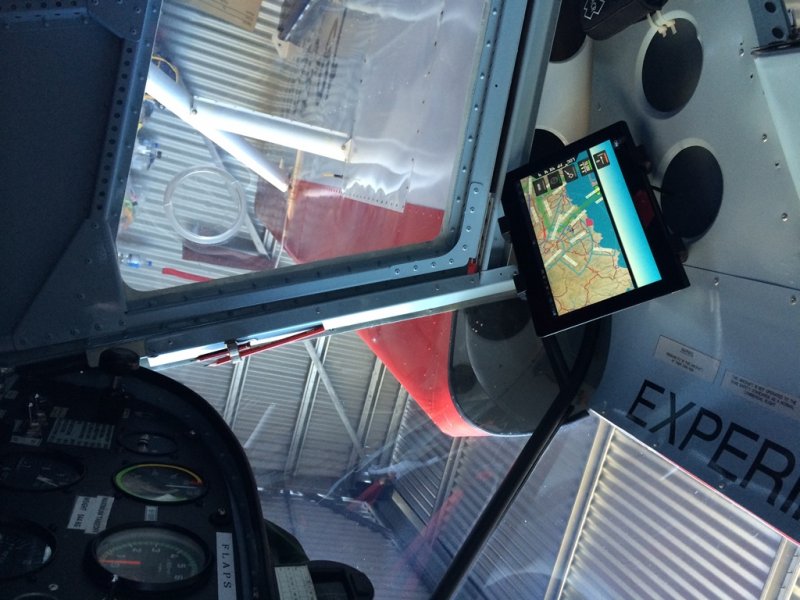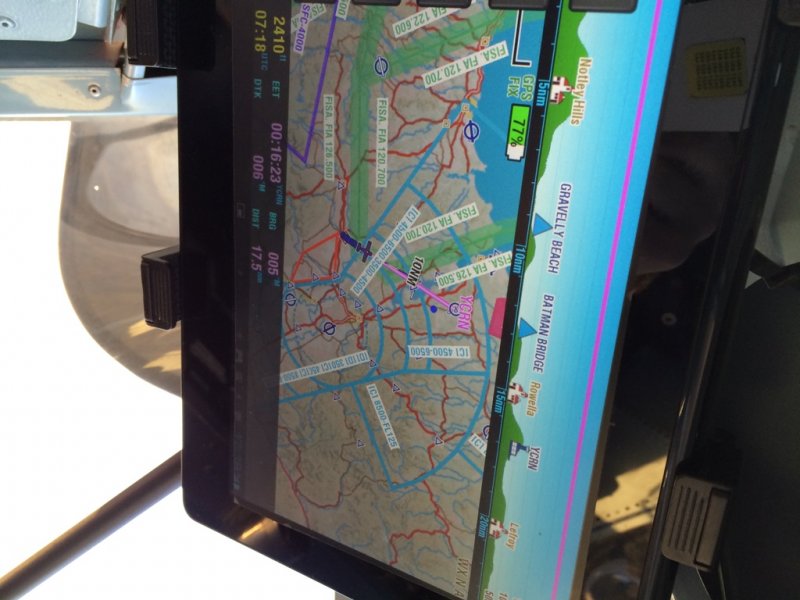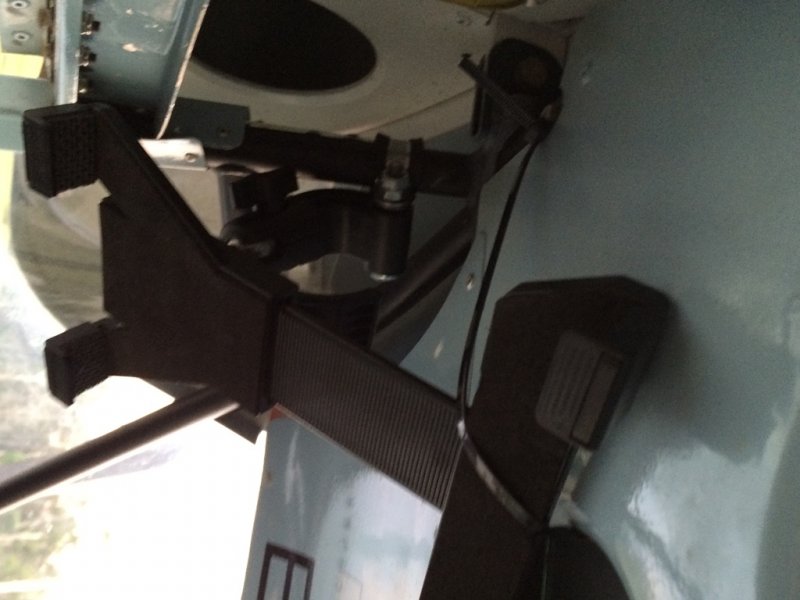
JerzyGeorge
-
Posts
70 -
Joined
-
Last visited
Content Type
Profiles
Forums
Gallery
Downloads
Blogs
Events
Store
Aircraft
Resources
Tutorials
Articles
Classifieds
Movies
Books
Community Map
Quizzes
Posts posted by JerzyGeorge
-
-
Good morning,
Disc bolts could be lock-wired or use medium strength locktite I used both and found locktite acceptable.
Keep in mind that you need to undo those bolts when you take a wheel off ( for a puncture or bearing repair)
Regards George
-
One very frustrated pilot I really feel for him
-
I am very sad, I met Sandra at Wynyard club and talked to her many times , something went horribly wrong RIP
-
Good morning,
I am not sure at what stage of building process you are at ,
I have been flying Savannah VG and S for a while 4 years and 550 hours
Doing my own maintenance ( most of it) I have a few comments.
If you are interested please send me an email to [email protected]
Recently got my website going you are welome to have a look www.worldbeneathmywings.com
Regards
George
-
Yes it is very interesting, I did read all answers and found them very useful. Perhaps more time should be spent during initial training on turbulence.
I developed my own technique to deal with turbulence. Never fly in yellow arc in rough weather, I always slow down before flying into turbulence , developed skills to predict rough ride,
I look for hills and valleys and wind direction, also thermal activities in summer time. I never stress airframe with big movement of the controls , quite often I do not resist or fight turbulence I let the a/c to fly with the turbulence and then gentle bring it back to my original course. Some times it does not look right for others but my control surfaces are not stressed and the whole airframe does not take punishment.
Of course this is when I can afford it i.e. with plenty AGL. Generally speaking I keep distance ( horizontal and vertical ) from turbulence generators and fly slower than in nice weather. If I could not follow these rules I treat my control movements under control ( gentle) and do not cause unnecessary airframe stress. The only exception is landing in rough air , I keep my speed higher then usual to be fully in control with small movements of control surfaces and take advantage of good engine power if I need. of course build your own method of dealing with turbulence suited to your skills and A/C you fly.
George
-
 1
1
-
-
I did fly over the spot they went down in my Savannah in clear skies ,
Did not descend onto steep valley where the place is fearing rotor from the mountains , looked down from high above and hair stood up at the back of my neck imagining what was it like in bad weather and poor visibility, Did two orbits and flew back to Tumut quickly happy to leave tiger country behind my tail
-
 1
1
-
 1
1
-
-
Good day
What modification did you do apart from paperwork?
I am considering upgrade to 600 kg of my Savannah S but could not understand the idea of two little pieces slipped in between wing struts brackets
I do not like the as per ICP instructions required drilling two holes in existing brackets to fix new bits.
In my opinion it will create weak point. Also will make inspection of the brackets more difficult.
Any opinions will be appreciated
George
-
Congratulations Liam
Great achievement and result of hard work and commitments,
Not many young people can do it , You are one exceptional young man,
Yes young man , because it requires strong character to achieve what you have just done.
About future flying , keep going at least every fortnight go flying . I am afraid you may keep at least two jobs to keep money flowing.
Have a respect for weather , be very thorough with flight preparations, and focus on improving your skills. Exchange your experience with other pilots. Always keep speed safe margin in the circuit, do not bleed the speed to low Do not hesitate to go around if approach is not right, ( few times I landed on my third approach).
Just a couple of aviation sayings:
1. Aviate, Navigate, Communicate,
2. A pilot who has 500 hrs thinks he knows everything
Pilot who has 1000 hrs knows what he does not know
Pilot who has 3000 hrs knows that he would never know everything
Safe flying and happy landings
George
-
 1
1
-
-
than ks guys , I like the new fitting with orings , have you got dimensions , I am prepared to do it tat way to solve annoying problem.
I took today original fitting out and could not believe that someone could design it that way , It has to leak sooner or later .
Total disaster and needs to be modify during construction . I wonder how many Savannahs suffer from this problem?
George
-
Good Dy All
My Savannah developed fuel leak from fuel yank fittings
It does not leak from loose rubber hoses
It leaks from bad seal between fuel tanks wall and hose fittings.
What is the best way of fixing it ???
I pull;ed off the wing skins from under the tanks already but need to find the reliable way to seal it
I would appreciate any suggestions
George
-
 1
1
-
-
Thank you guys for a lot of quality information
George
-
Good day,
I would appreciate any comments on fuel management while flying Savannah with long range tanks.
I can see fuel level in inner tanks , but how can I guess level in outer tanks??
Also having return fuel line to inner tank is a risk of overfilling this tank while full
Regards
George
-
Perhapps Jabiru or Topaz or Svannah
-
Any suggestions recommendation of different manufacturer of fl uel
pump or perhaps supplier of the old style??
Perhaps old design was better than a new one???
-
I do not like the idea of oil Beiing discharged to air box air box should be by definition clean without risk of air filter clogging up.
-
first time swigs were about 25 deg on the dial gauuge do not recall exact numbers it was 2.5 years ago
The second time pressure was dropping gradually and I switched electric pump on before it reached zero.
After few minutes I switched electric off and problem came back, left electric on for duration of flight and modified my route home to have many outlanding options open.new pump is 350$ but perhaps you can swap with spare one borrowed from friends.
George
-
I had similar event and installed new mechanical fuel pump which fixed problem.
Second event fuel pressure was dropping while on mechanical pump only, flew home on electric pump All the way and installed new mechanical pump (again) and problem went away, put a post on this forum some time ago. Perhaps fuel pumps are not as used to be??? Have not changed anything else.
Another possibility blocked vents ( unlikely).
George
-
Thanks a lot Nev . You have a lot of experience I think I can learn a lot from you . It is amazing how much value is in this discussion like this. George
-
 1
1
-
-
Thanks Nev for positive comments The runway was behind my tail ( it was after touch and go) and yes I was lining it up into wind for landing , during one of the practice engine failures I did turn with the wind and lost so much altitude and distance that could not come back into runway. Because it was not a real thing I landed under power but it taught me a lesson- turn into wind rather with the wind. It was some time ago , perhaps 4-6 months ago before I really needed. And yes my focus was to find acceptable landing area and nose - horizon ( speed) . GeorgeThat decision at that height is good and confining your areas to 30 degrees or so off runway heading and using the into wind direction of turn if possible, is pretty standard stuff, proven to be the best advice generally . YOU did the right thing.No two situations are the same though . IF you have thought about where you will go prior to opening the taps. You are even better prepared. IF you have a very long runway you may want to lose height quickly and land on the remaining runway available. This may require taking full flap and diving the height of quickly, rather than gliding at best speed and a more positive flare. Regarding those stall speed variations with bank angle.... In a tight situation you are not going to be looking much at the airspeed, so practicing steep gliding turns gives you a knowledge of your planes nose down attitude needed and some awareness of the stick position, should be trained into you.. You don't want to bang into a large tree trunk that is the only one around, because you weren't game to turn it a bit more. Nev -
This is great lesson I have just been through real efato at 500 feet or less, made Mental commitment not to turn back, . Gentle coordinated turns only while selecting outlanding 30 deg. of the nose.
I had only a minute or less and instinct ( hammered into my brain by instructor long time ago) kicked in. Practice and refresher exercise at least once a month payed off on the day.
-
 4
4
-
 1
1
-
 2
2
-
-
Sorry Guys , could not get orientation of the photos right . Do not know how to fix it.
George
-
Hi All,
I have discovered pretty cool place to install tablet.
It is easy to read even in bright sun ( because it is sheltered from it), does not obstruct outside view, and fuel gauge is still easy to read. Perhaps will need external GPS antenna if signal is average.
I use Easy VFR software and love it , would recommend it any time.
Please have a look at the photos
Obviously install at your own risk , the same like flying Savannah.
George
-
correction should be NO leakThanks for the information, I did the same , took it to radiators repair shop , have not tested in flight yet, but there is leak when cold.Still not sure about radiator hung by the rubber hoses only . Any other radiators I know of have been solidly mounted, example oil radiator in the same aircraft. Surely vibration must cause material fatigue.George
-
 1
1
-
-
Thanks for the information, I did the same , took it to radiators repair shop , have not tested in flight yet, but there is leak when cold.
Still not sure about radiator hung by the rubber hoses only . Any other radiators I know of have been solidly mounted, example oil radiator in the same aircraft. Surely vibration must cause material fatigue.
George




CASA finds pilot responsible for Essendon crash
in Aircraft Incidents and Accidents
Posted
It is hard to accept that very experienced pilot could not quickly identify problem with wrong trim and correct it in split second,
Also trim could not be strong enough when adrenaline is pumping to negate rudder control ( in my opinion)
But I do not know all the facts. Did he indicate over the radio the nature of the problem?